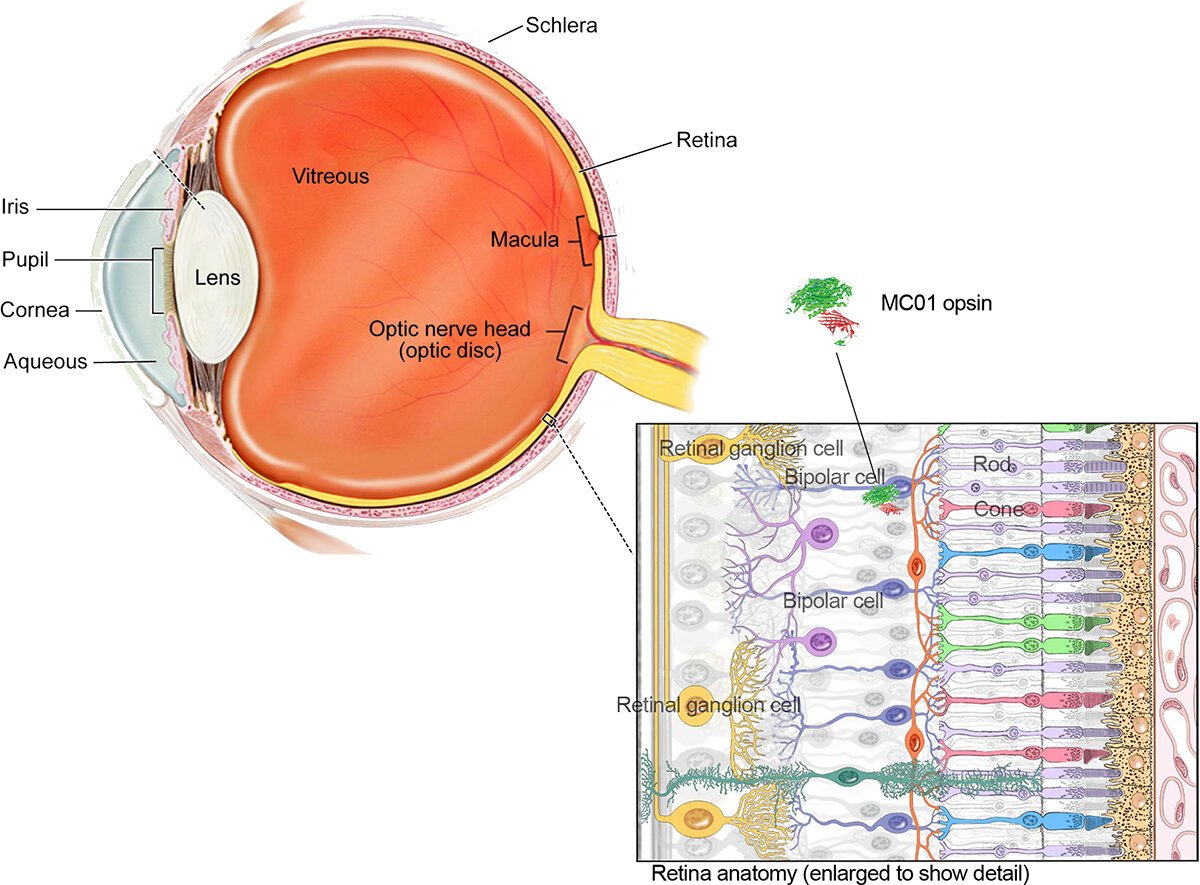In some forms of blindness, certain parts of the eye still work but damage to light-sensitive cells disrupts vision. Now, researchers at a company called Nanoscope have used gene therapy to bypass damaged cells and restore some level of vision to mice that were completely blind.
Photoreceptors are the rods and cones in the retina, and these cells are the first step in the chain that enables vision. When the photoreceptors are activated by light, they send a chemical signal to other retinal neurons, including what are known as bipolar cells, which in turn send the signal to the optic nerve and onto the brain for processing.
Unfortunately, those photoreceptors become damaged in many eye diseases, such as age-related macular degeneration and retinitis pigmentosa. That impairs vision even if the rest of the circuitry is still functional.
So for the new study, the researchers tried to bypass the photoreceptor cells and activate the bipolar cells directly. To do so they targeted a gene called MCO1, which expresses signaling proteins called opsins in photoreceptor and bipolar cells.
“The beauty of our strategy is its simplicity,” says Samarendra Mohanty, corresponding author of the study. “Bipolar cells are downstream from the photoreceptors, so when the MCO1 opsin gene is added to bipolar cells in a retina with nonfunctioning photoreceptors, light sensitivity is restored.”

National Eye Institute
The new treatment involves a one-off injection of the MCO1 opsins carried in an adeno-associated virus (AAV2), into the eye. The team tested the technique in mice with retinal degeneration, which caused them to have no light perception at all. The treated mice appeared to regain light sensitivity and retinal function, as they performed significantly faster in visual tests like navigating mazes and reacting to changes in motion.
Levels of MCO1 in the bipolar cells appeared to stay high for six months after injection, and importantly other cells weren’t expressing the protein any higher than usual, indicating the therapy didn’t have off-target effects. Blood and tissue tests indicated no sign of inflammation either.
While the results are promising, the team says that it’s unclear how the restored vision might compare to normal vision – although it definitely sounds like an improvement over being blind. To find out how well it works, Nanoscope plans to begin human clinical trials in the US later this year, in patients with severe retinal disease.
“A clinical study in people will help us understand how signaling through bipolar cells affects vision quality; for example, how well treated eyes can pick out fast-moving objects,” says Subrata Batabyal, lead author of the study.
The research was published in the journal Nature Gene Therapy.
Source: National Eye Institute
Source of Article